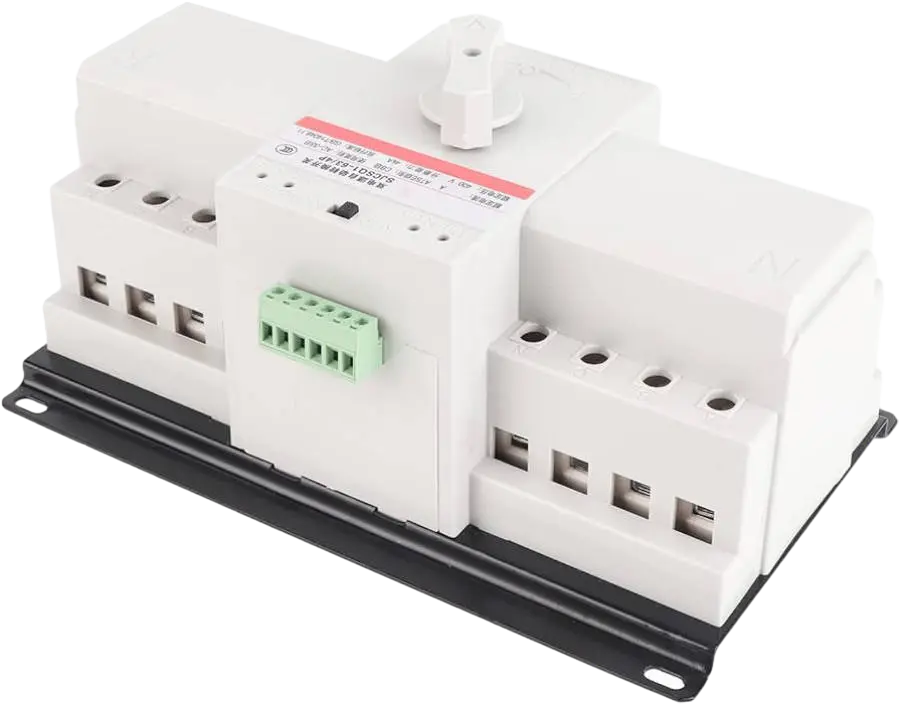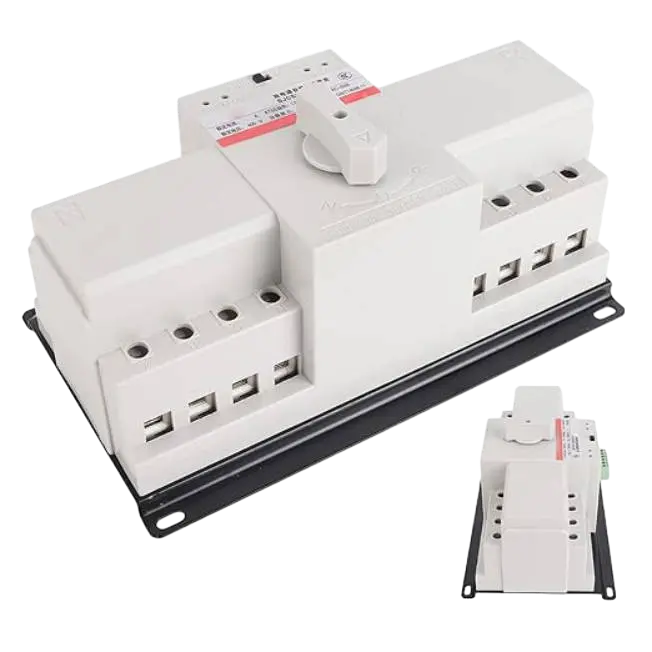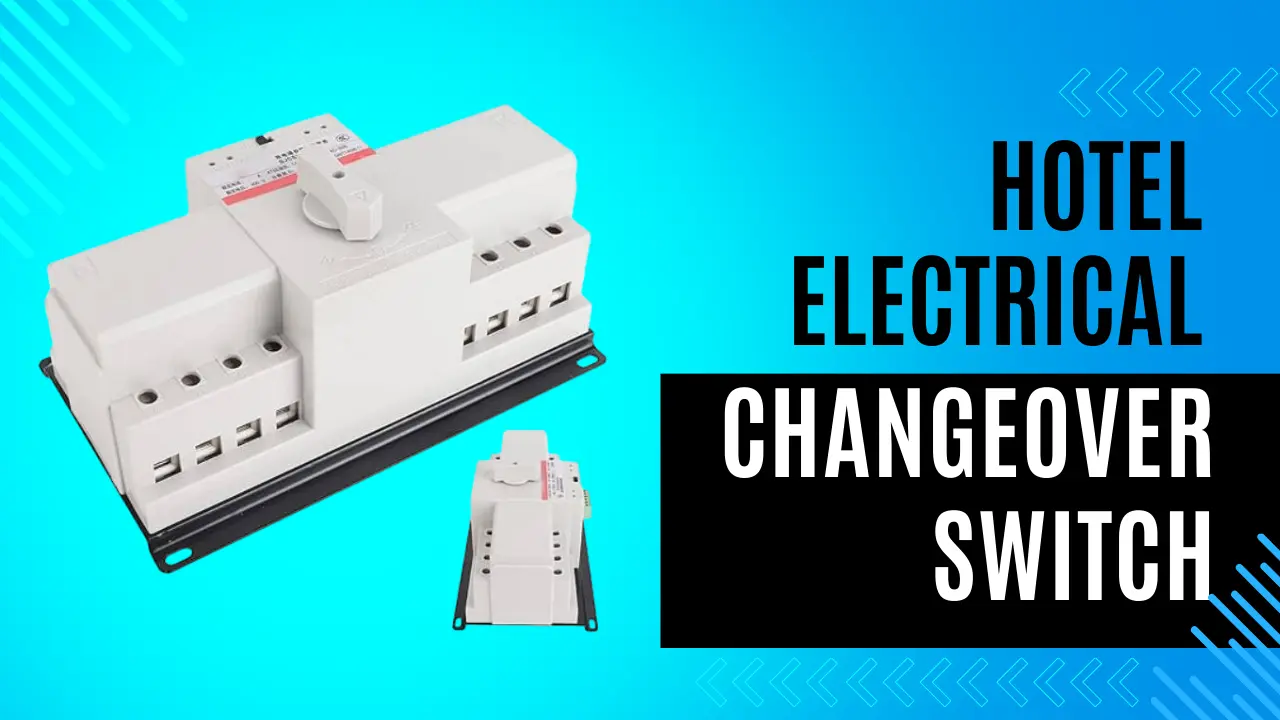It’s 11 PM in the middle of July and your hotel is fully booked. The air conditioners are humming along at full capacity trying to combat the summer heat. The kitchen is busy preparing room service orders. Guests are streaming in from a conference that just let out. The phones are ringing off the hook. Then suddenly everything goes dark. A power outage has struck.
This is a nightmare scenario for any hotel manager. Without power, very little can function. Guests get understandably upset when their lights, air conditioning, TVs, and wifi cut out without warning. The disruptions quickly cascade as elevators stall, kitchen appliances won’t turn on, and panicked voices shout in the pitch-black lobby.
Thankfully, power failures don’t have to lead to such dramatic disruptions for hotels. Installing backup power systems and electrical changeover switches can minimize the impact of outages. Hotel managers who understand how to properly equip and operate these systems can keep their properties running smoothly, even when the grid goes down.
What is an Electrical Changeover Switch?

The changeover switch monitors incoming voltage from the utility electricity. If it detects a significant drop indicating a power outage, it will automatically kick in the backup generator system. Once the generator is online providing electricity, the switch then shifts the building’s circuits over to drawing from that backup power instead of the now inactive utility connection. It ensures a seamless transition that keeps the lights on.
When utility electricity comes back online, the sensor in the switch detects the restoration of proper voltage levels. It then shifts the building’s systems back to the main grid and turns the generator off. This automation and sensing capability is why they’re termed “automatic transfer switches.” It enables backup systems to kick in within seconds without any manual intervention needed.
Changeover Switch Configurations
There are two main setups hotels employ when installing a changeover switch system:
1. Whole Building Backup
With this configuration, the switch shifts the entire hotel over to generator power in case of an outage. This covers all electrical systems, including guest rooms, common areas, security lighting, refrigeration, elevators, and more. It often utilizes a large 150-300 kW generator.
The main advantages of this approach are:
· Keeps 100% of hotel fully functional
· No disruption to guests during outages
· Simpler system with a single larger generator
Potential downsides are:
· Higher upfront costs for larger capacity equipment
· More guests and systems to protect meaning increased runtime needed. Fuel can run out quicker.
· Single point of failure. If generator has issues, the whole building loses power.
2. Critical Systems Backup

This might cover emergency lighting, fire alarms, freezers, network rooms, a few elevators, and skeletal hallway and lobby lighting. Guest rooms remain dark. A smaller 60-80 kW generator can support just these key functions.
Benefits of the critical systems plan:
· Lower equipment costs
· Extended run time from smaller fuel demands
· Potentially redundant generators possible
The limitations:
· Guest rooms and some hotel areas without power during outage
· More complicated electrical plan
· Need to educate guests on partial functioning
Within these two main configurations, a range of customized options exist across budgets and hotel needs. Any upgrade is better than relying solely on unstable grid power though.
Sizing Your Hotel’s Generator
Properly sizing your generator is a crucial design choice impacting costs, runtime, and electrical capacity. Carefully audit your hotel’s electrical usage situation before purchasing equipment. Consider factors like:
· Maximum occupancy numbers during peak season
· Electrical ratings of existing HVAC systems
· Kitchen equipment power draw
· Emergency system demands
· Intended runtime during an outage
Undersizing your generator can lead to overloaded circuits, equipment damage, or the system shutting down unexpectedly. Oversizing substantially raises costs without much added benefit.
Most manufacturers provide generator sizing tools that combine these variables. Consulting an electrical engineer to assess your hotel’s needs is wise for optimizing this complex decision.
Changeover Installation Tips
Proper setup is vital to realizing the benefits of adding a changeover switch and backup generator:
· Hire a certified electrician experienced with commercial switch installs
· Follow all relevant NEC and local electrical codes
· Locate the generator in an outdoor, well-ventilated area away from guest windows
· Soundproof generator enclosures to reduce noise disturbances
· Use copper wiring and appropriate gauge sizes for all connections
· Test system periodically by intentionally turning off main breaker
Periodic load bank testing helps verify your generator can start and sustain emergency runtimes. Switch out old fuel and keep extra supply on hand for outages going beyond 24 hours. Also register the generator’s UL number with your utility company so line workers are aware of the backup system’s presence.
Power Outage Precautions
Even robust emergency systems occasionally fail or run out of gas during an extended weather event. Hospitality managers should prepare contingency plans to maintain guest services without electricity:
· Stock battery operated lighting
· Provide gas cooking capability
· Have easy quick food options if kitchen is affected
· Offer coffee, snacks, games in naturally lit lobby areas
· Communicate openly with guests if disruptions occur
· Document failures for insurance claims and system tweaks
A well-designed changeover system limits the likelihood of long powerless periods. But the above countermeasures combined with friendly transparency around issues can retain satisfied guests when the inevitable outage does strike. Prevention through equipment paired with empathy when fate intervenes is key.
 Take Control of Your Hotel’s Electricity
Take Control of Your Hotel’s Electricity
Installing a modern automatic changeover switch linked to an appropriately sized generator gives hotel managers reliable capability to minimize the impacts of utility power outages. While not cheap, the systems provide strong insurance against the high costs of business disruptions, property damage from extended outages, and group booking cancellations that occasionally occur. Peace of mind around controlling your hotel’s electrical destiny is difficult to overstate.
Whenever the lights flickering heralds an incoming storm, having robust backup systems in place lets staff confidently flick the switch to keep serving guests without missing a hospitality beat. By planning ahead to navigate electrical changeovers, hotel managers can sustain power while competitors sit in the dark scrambling to deal with the unpredictable whims of aging utility grids. Be prepared and keep your hotel shining whatever the infrastructure storms ahead.

 Take Control of Your Hotel’s Electricity
Take Control of Your Hotel’s Electricity